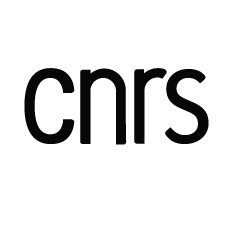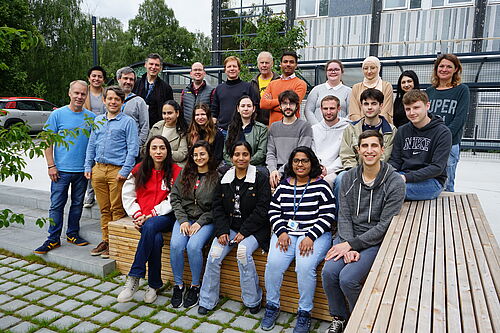NMR and inorganic materials
Team leader: Prof. Olivier Lafon
Associate team leader: Dr François Mear
Team leader foreword
The scientific objectives of the RM2I team are to push back the frontiers of solid-state NMR spectroscopy to probe the arrangement and motions of atoms in disordered or amorphous materials, with applications in the fields of energy, adaptation to climate change and catalysis, and to design new materials, in particular oxide glasses, on the basis of this structural and dynamic information. It belongs to French (INFRANALYTICS) and European (RIANA) research infrastructures (IR) and is heavily involved in the Lille NMR platform, which includes some of the most powerful high-field NMR spectrometers in the world (1.2 GHz and 900 MHz). Our team is also actively collaborating with industry, notably on the development of anti-oxidation coatings for carbon-based materials used in the aerospace industry.
Olivier Lafon, Professeur Univ. Lille
Main research themes of RM2I team:
• Theme 1: Solid-state NMR spectroscopy of quadrupolar nuclei at high magnetic fields
We develop innovative methods to observe the local environment of quadrupolar nuclei (27Al, 11B, 35Cl, etc.), which account for 75% of the nuclei observable by NMR, by probing their proximity to their neighbours. One of the challenges is to observe less sensitive quadrupolar nuclei (14N, 17O, 47,49Ti, 67Zn, etc). This research is based on simulations of spin dynamics and experiments on very high field NMR spectrometers (800, 900 MHz and 1.2 GHz) of Lille facility.
• Theme 2: Adsorption and active sites of adsorbents and heterogeneous catalysts
We investigate organometallic catalysts, porous materials, such as metal-organic frameworks (MOF), and zeolites, as well as amorphous alumina-silicas, with applications in hydrogen and CO2 capture, pollution control and biomass recovery. Using very high-field solid-state NMR spectroscopy, we probe the local environment of metal sites (27Al, 95Mo, etc.) and 17O nuclei.
• Theme 3: Structure-stability-properties relationships of materials with photovoltaic and optoelectronic properties
Our goal is to better understand these relationships for hybrid perovskites, organic semiconductors and quantum dots. Using solid-state NMR spectroscopy combined with other techniques, we are studying the stability of hybrid perovskites and organic semiconductors. In particular, solid-state NMR spectroscopy is used to identify atomic-scale structural changes and degradation products.
• Theme 4: development and characterization (in particular by NMR) of oxide glasses with innovative properties
Target applications for these oxide glasses include protection against oxidation of carbonaceous materials, fuel cell seals, heterogeneous catalysis and solid electrolytes. In particular, we are developing self-healing glass materials. The development of these glassy materials is based on structural and dynamic information obtained by NMR spectroscopy of solids.
Team members
| Name | Function | Employer |
|---|---|---|
| Jean-Paul Amoureux | Emeritus professor | Univ. Lille |
| Laurent Delevoye | CNRS Research Director | CNRS |
| Yury Kolyagin | Researcher | Univ. Lille |
| Olivier Lafon | Professor | Univ. Lille |
| François Mear | Associate professor | Univ. Lille |
| Lionel Montagne | Professor | Univ. Lille |
| Frédérique Pourpoint | Associate professor | Centrale Lille |
| Manjunatha Reddy G N | Associate professor | Univ. Lille |


